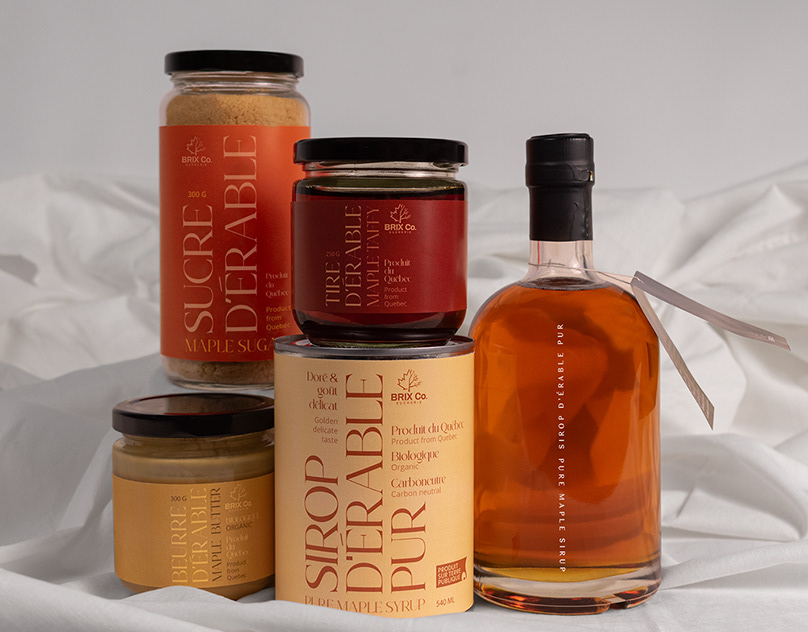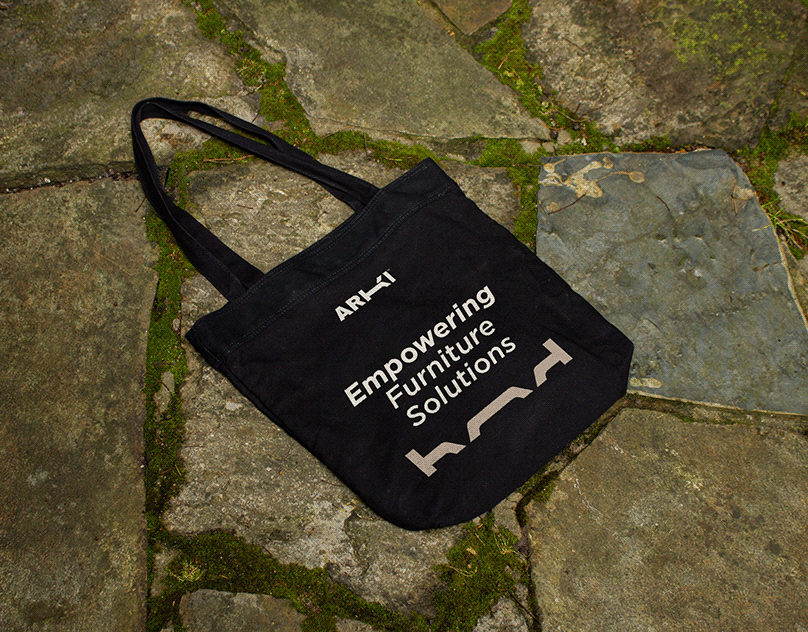
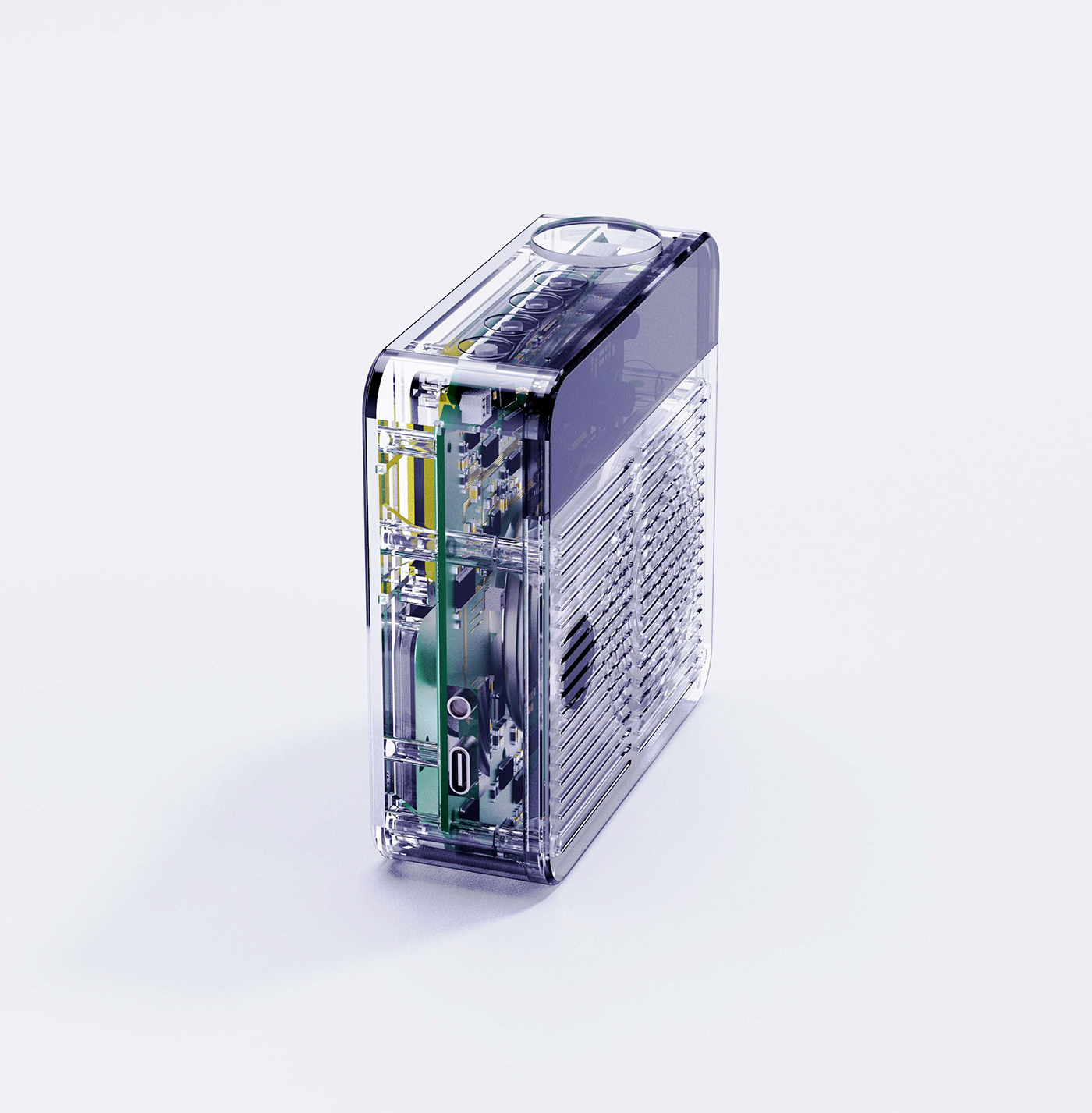
Project Sponsor
Braun
Project Title
The future of sound: Redefining the idea of audio experience
Project Duration
6 months
[ Braun SK01 ]
Brief
To redefine the idea of audio experience in a present-day home scenario by adapting the essence of former Braun audio products.
Brief Constraints
A few of the constraints which came along with the project brief were revolving around the end deliverables. The end product would be a tangible tactile product but, shouldn’t be a wearable audio product. Meaning, that earphone headphone concepts will not be welcomed. The project is a conceptual work with no ideas on manufacturing and mass production.
Brainstorming Phase
Brainstorming is the ideal starter method to generate words, phrases, news, and ideas that relate to that one word, which in my case was “remote work”. Post-its of similar areas of interest and targets were grouped. While grouping, there seemed to be two major groups. Entertainment and Remote work. Under the umbrella term of Remote work, there were topics of online classes, personal life imbalance and so on. Under entertainment, there were music genres, socialisation, VR etc. With two prominent contexts, secondary research helped in narrowing it down to one.
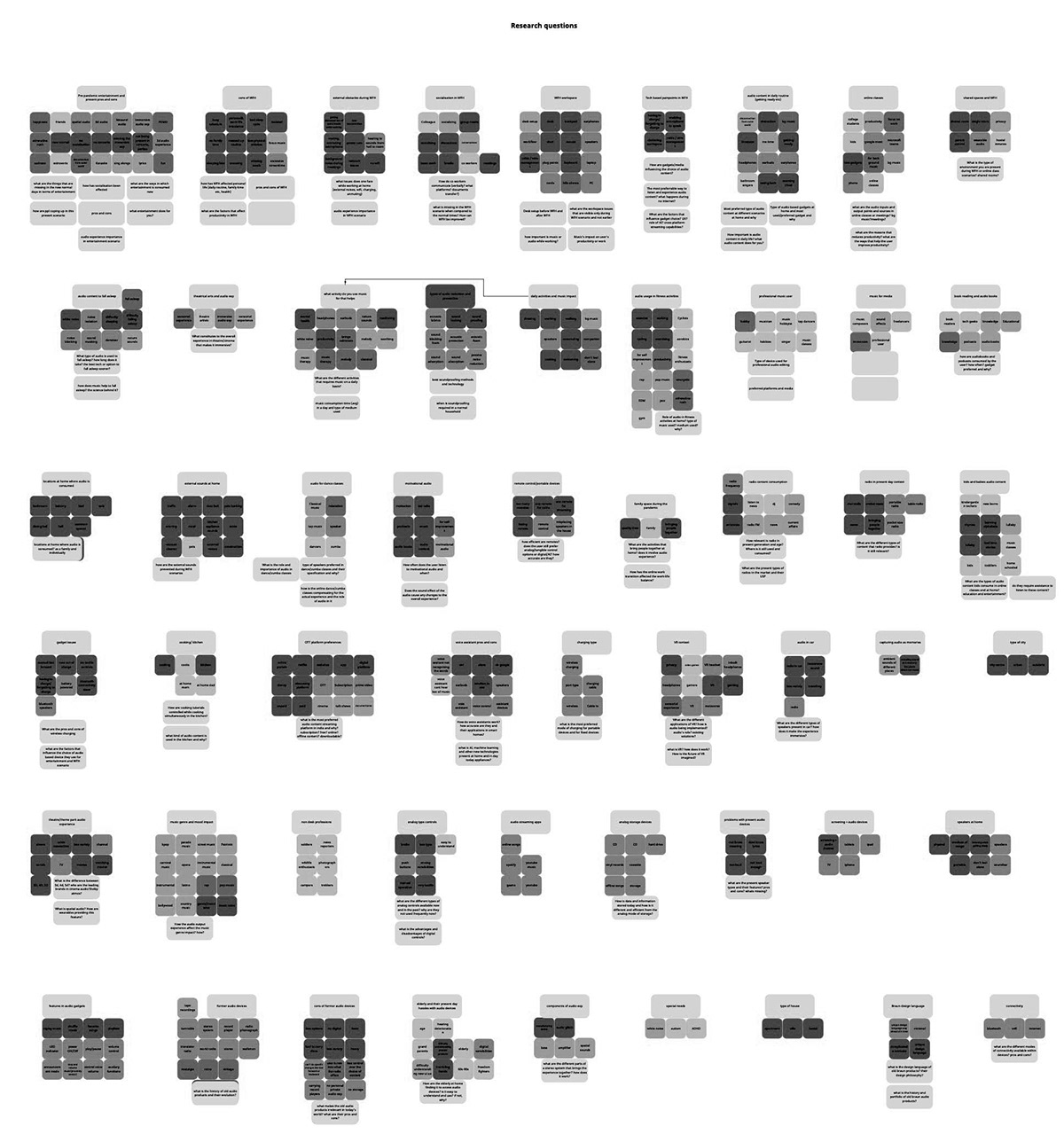
Choosing specific user & context
Entertainment had a lot of scope with new opportunity areas rather than problem areas with technology and open-ended solutions like VR. Remote work has been a progressing situation for the last two years and had the chance of becoming a permanent working option in the near future. It had problems that could be solved within this project period. With issues revolving around working duration to microphone issues, the deliverables seemed straightforward. With tangible solutions and actual problem-solving, remote work had more opportunity areas as well.
Refined Brief
To redefine the idea of audio experience in a present-day WORK FROM HOME for working professionals and students scenario by adapting the essence of former Braun audio products.
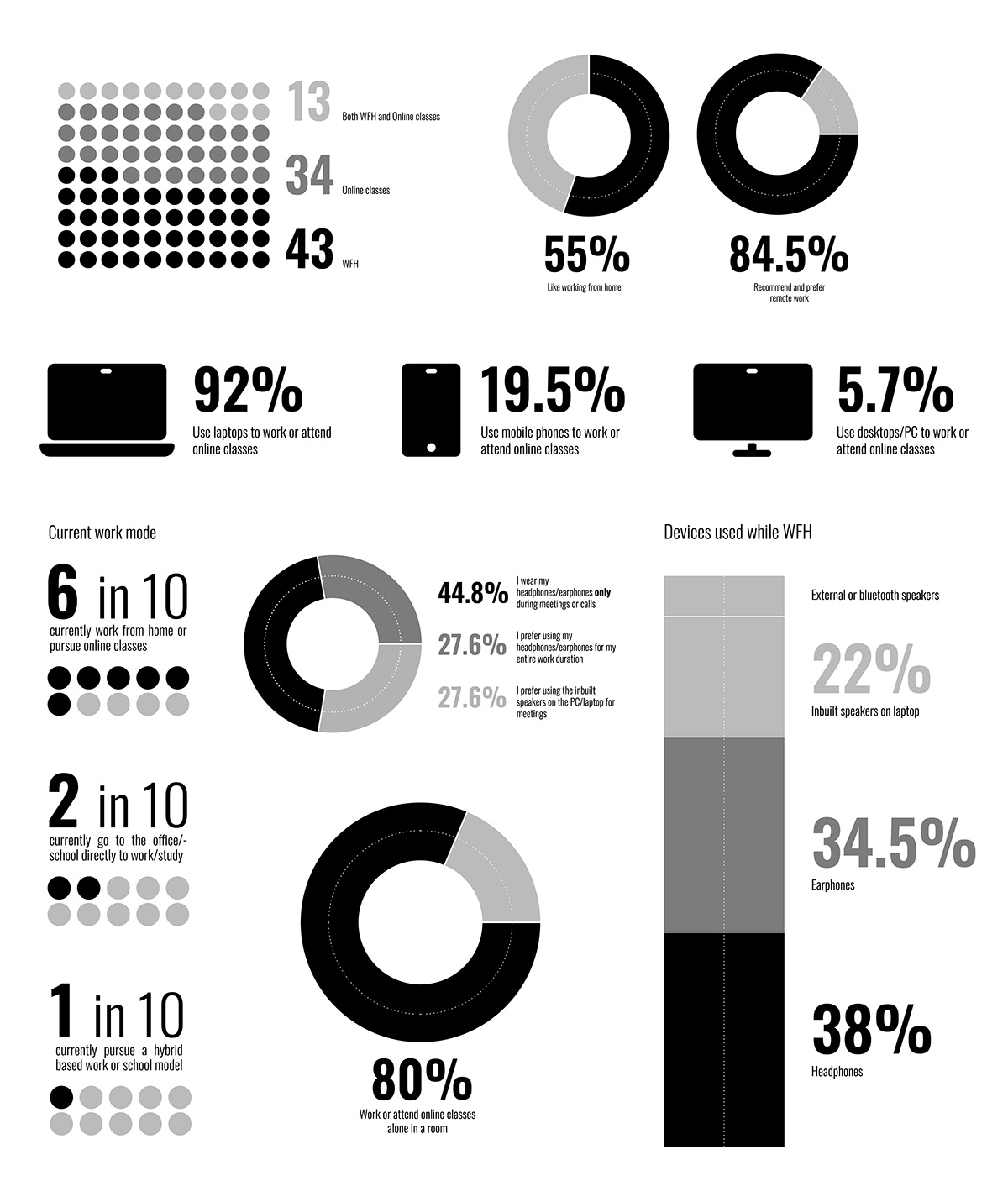
Main takeaways
- Users not having the opportunity to immediately connect and resolve doubts like it used to be in a normal office scenario.
- Not being able to take a break from work as they are completely glued to the screen, they lose track of time.
- Proper reminders for meetings are needed, muting, and unmuting meeting errors.
- Constant background noises depreciate the productivity of the meeting and wearables cause health issues when worn for a longer duration.
- Music is the most preferred audio content choice while working and the type of music one listens to varies according to the type of work one is indulged in.
- Users prefer headphones/earphones for meetings as the mic is closer to them and blocks out any background noise but can’t wear them for longer durations.
House of Quality
While the user needs and opportunity areas were defined, the technical part of the product had to be worked on. Something like this was never been a part of my earlier projects and this was refreshing and quite insightful to learn how the technical specifications of a product are based upon.
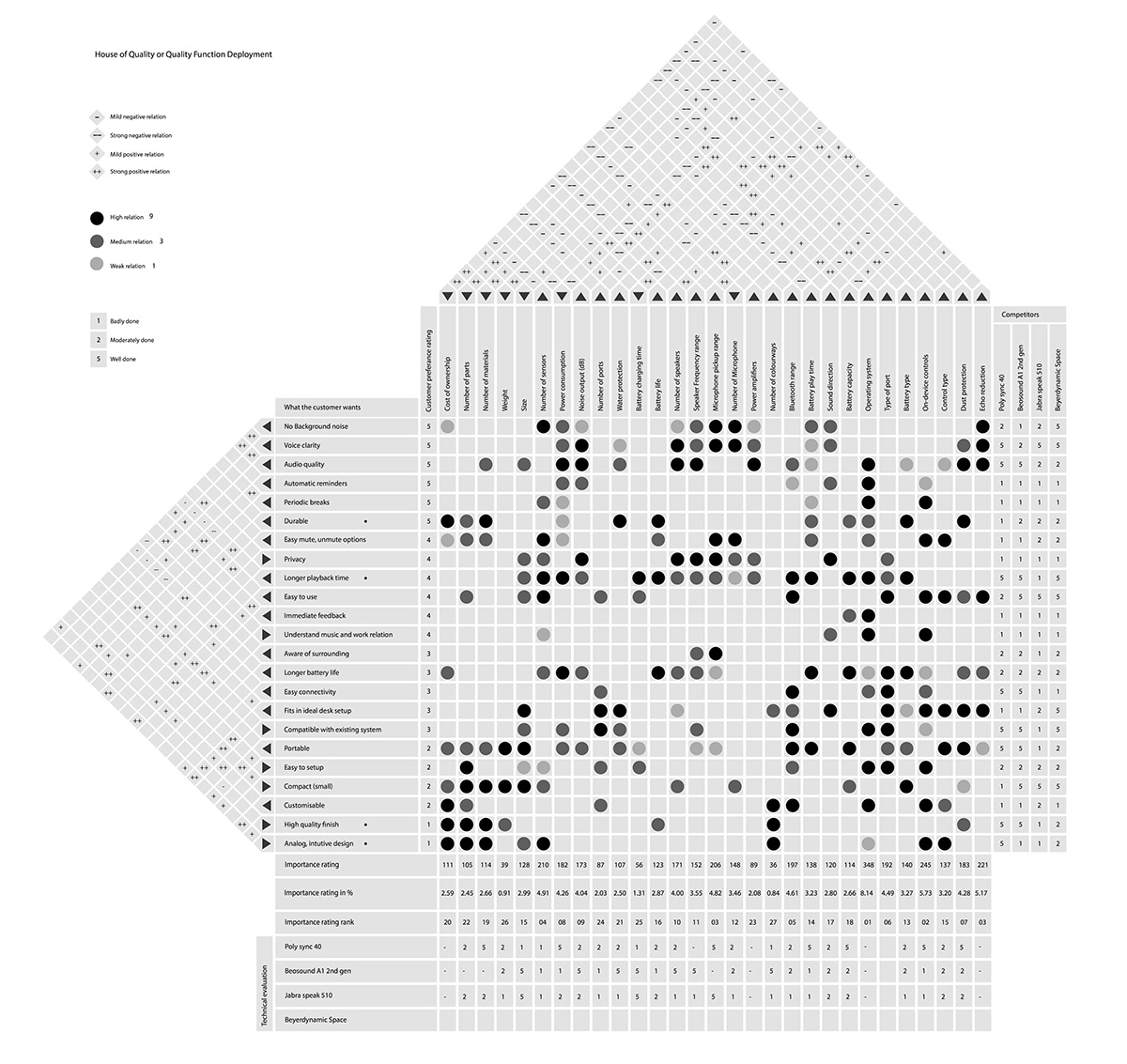
Braun design language study
Keeping the research phase at rest after identifying the pain points and opportunity areas, it was essential to understand the second objective of the brief, “Adapting the essence of former Braun audio products”.
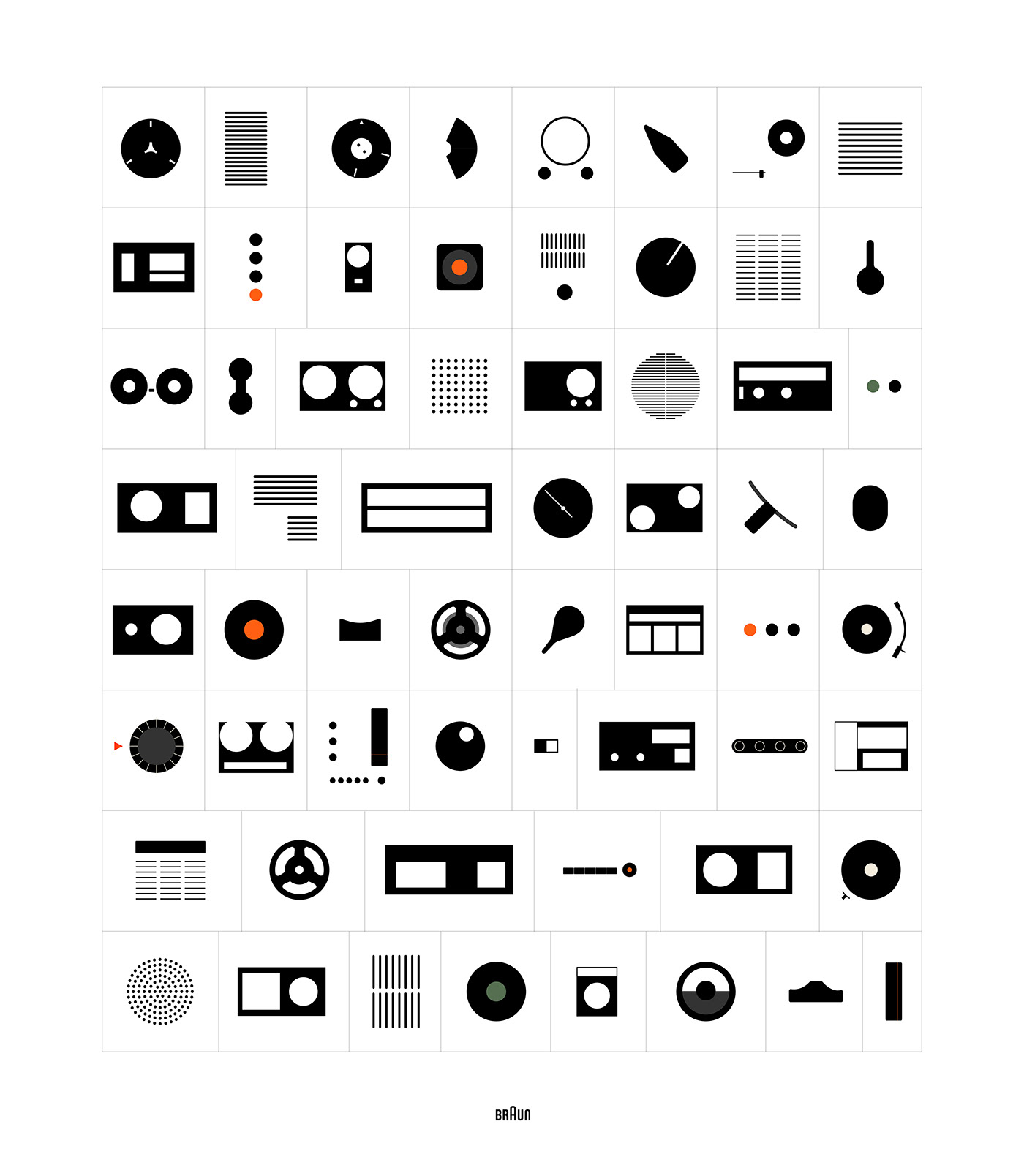
Product timeline
Audio being a vast industry has various categories and consumers one can cater to. The german-based company started ideally by making radio sets and later record players. Max Braun designed radio phonographs, a combination of a radio and record player. Speakers were also designed to be placed on a bookshelf or furniture. Braun took an attempt with wearable audio, and headphones but soon dropped the idea. Tape recorders, tuners, and amplifiers were designed for a niche user category, mostly music enthusiasts. Braun’s portable radios and phonographs were also popular and sought-after in the market.
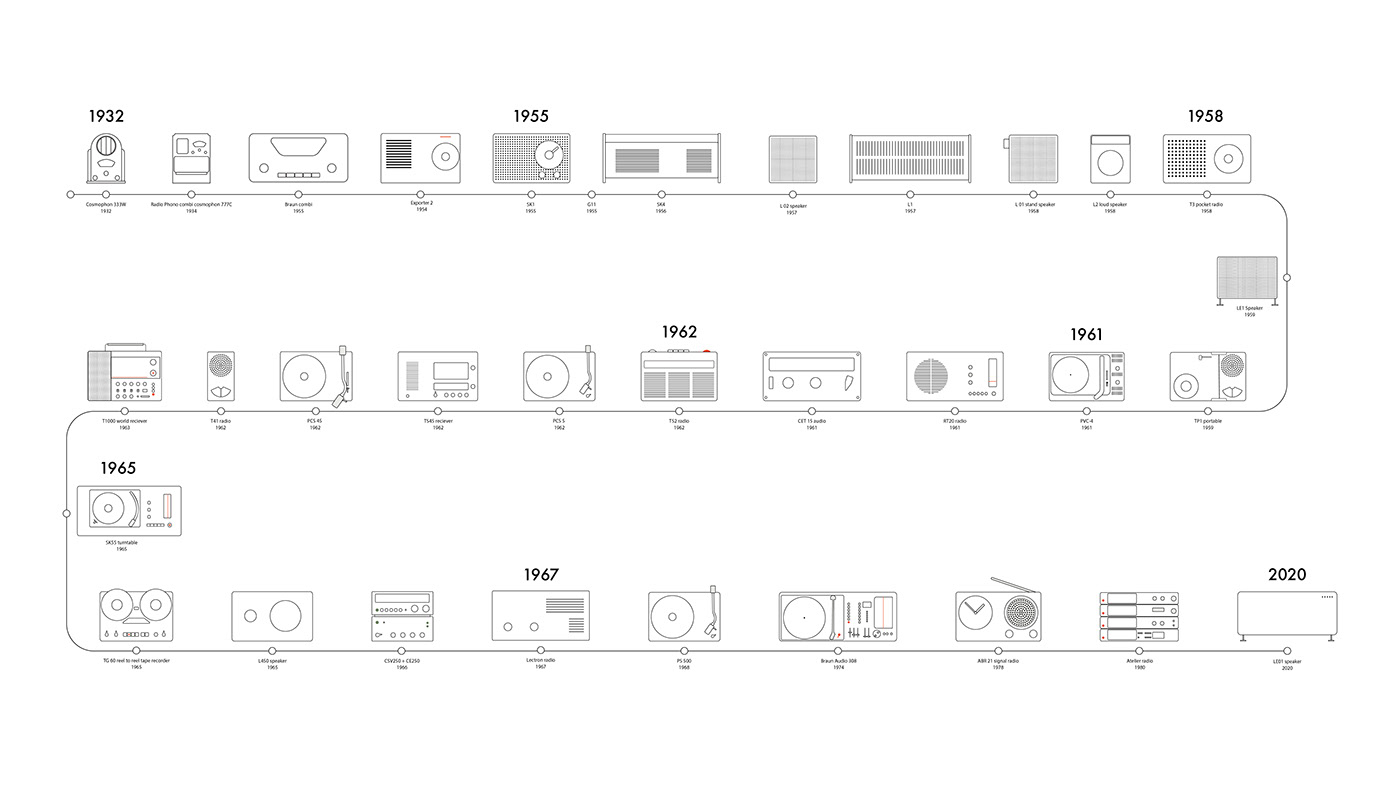
The SK series
Nicknamed “The snow white’s coffin”, the SK4 is one of the most popular and groundbreaking innovations ever made by Braun. The unit probably did more to distinguish Braun's design than any other product. Using a clear plexiglass cover in combination with a white paint job was considered insanely progressive in the 50s.
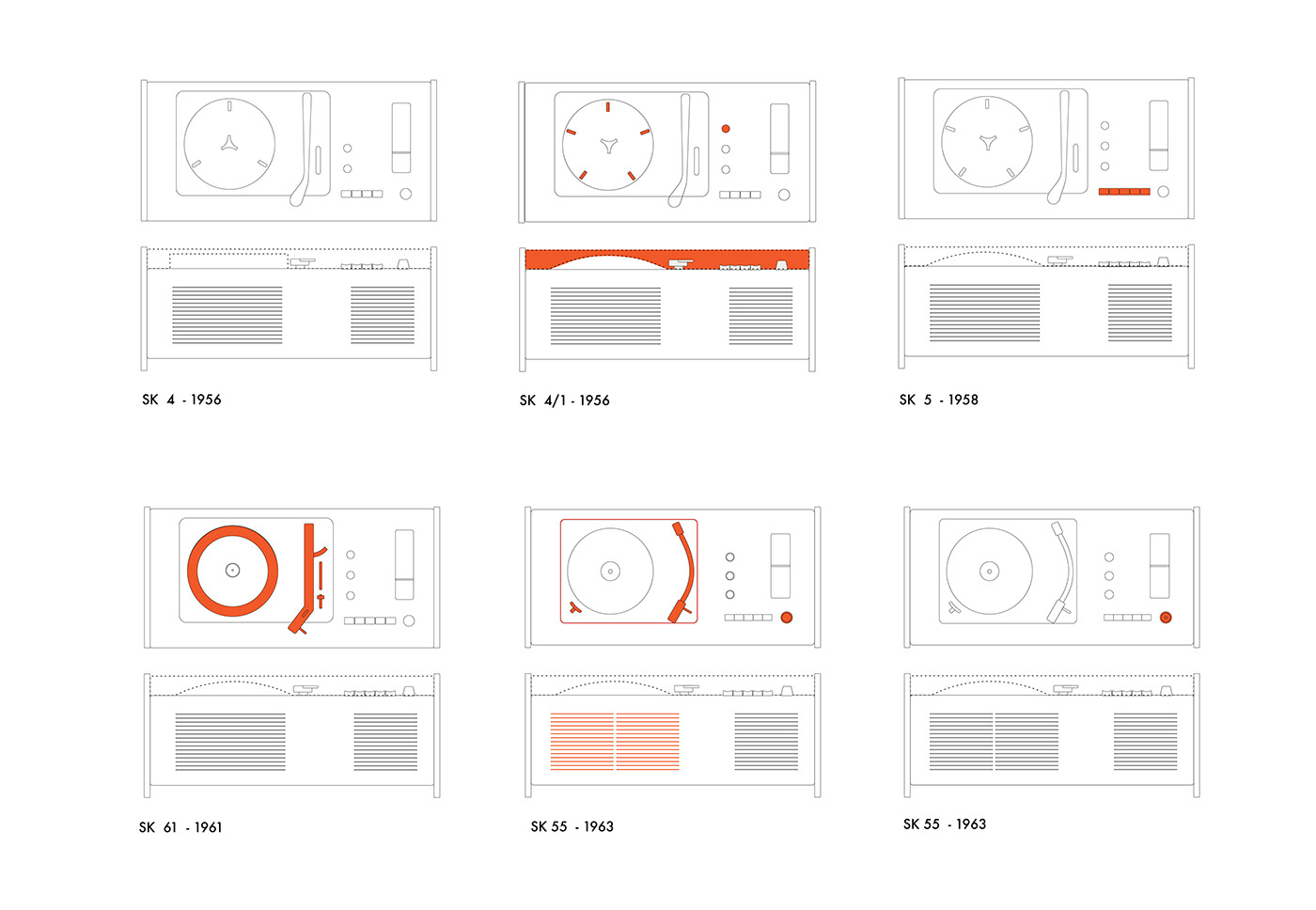
Product analysis
Breaking down all components and parts of the SK55 to understand their functioning and placement of them.
Materials Used: Ash wood, Powder coated sheet metal, ABS plastic Aluminium, Plexiglass
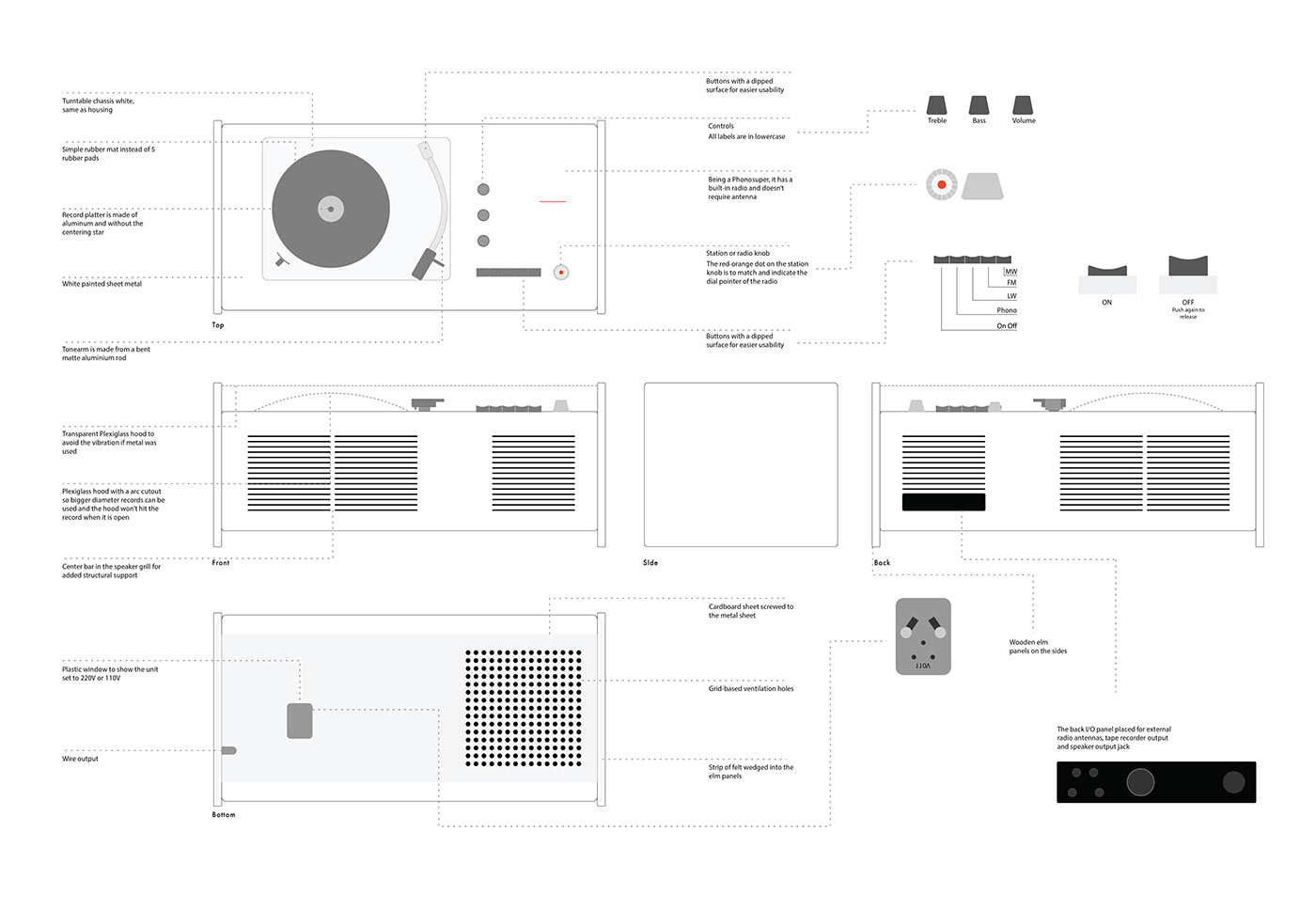
Concentric dot grid
Easily recognisable as one of Braun’s speaker grill designs, the concentric dot grid is its own wonder. With calculated spacing and radii grids, the concentric grid makes its appearance in quite a few Braun products like the T41, TP1, ABR 21 and the T41. Being the only circular formation speaker grill design, the composition of its form with the other elements of the unit is quite unique.
Dot grid
One of the oldest speaker grill designs and the most used up to this day is the dot grid speaker grill. It was presented first in the SK 1 back in 1955. This dot grid pattern follows strictly a square pattern, providing a contrast to other circular elements in the product unit.
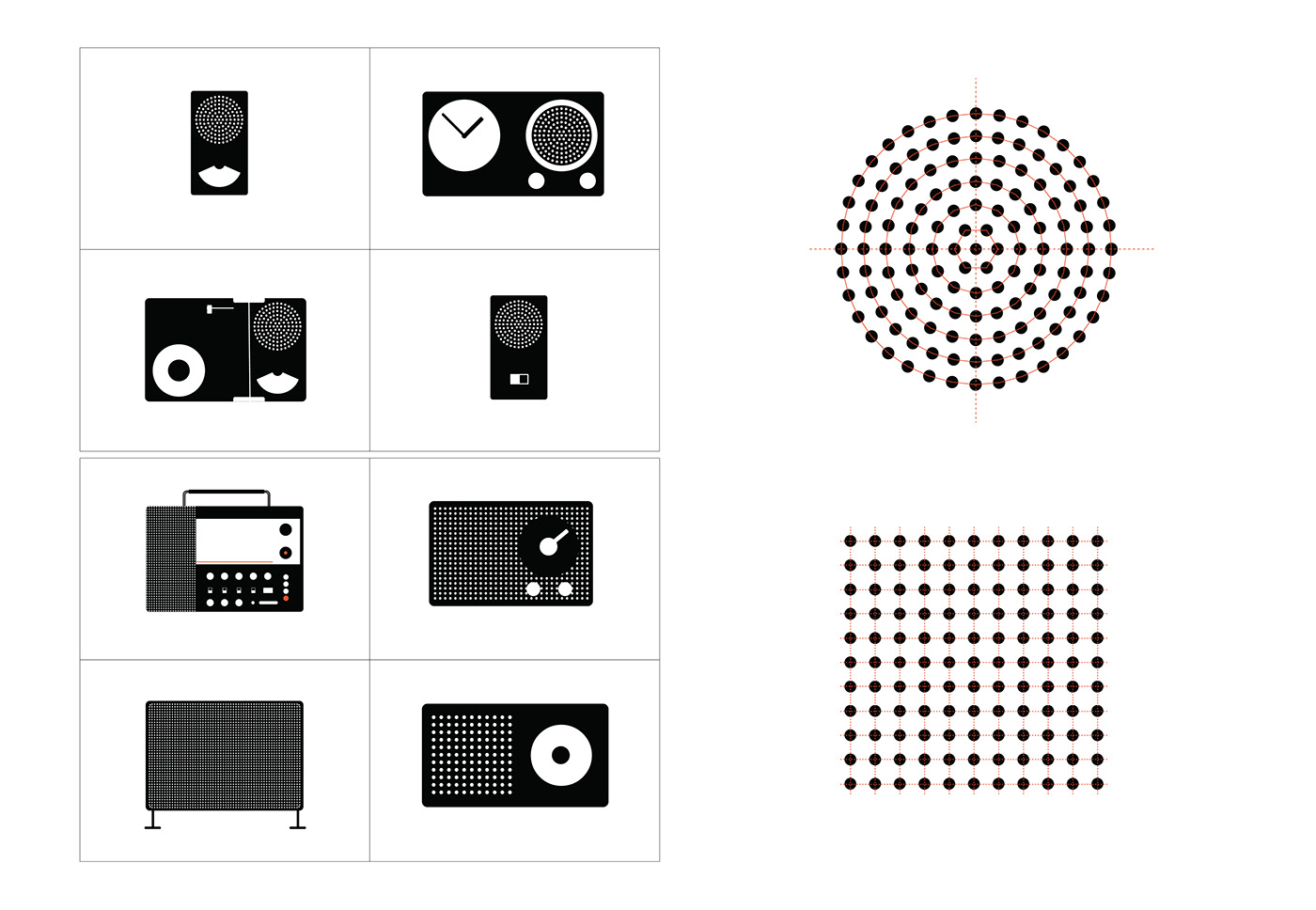
Horizontal & vertical slots
Being one of the most used and prevalent speaker grill designs in Braun’s audio range, linear slots have marked their place in Braun’s design legacy. An interesting factor about the Braun audio range was that they were designed to be an ecosystem of its own.
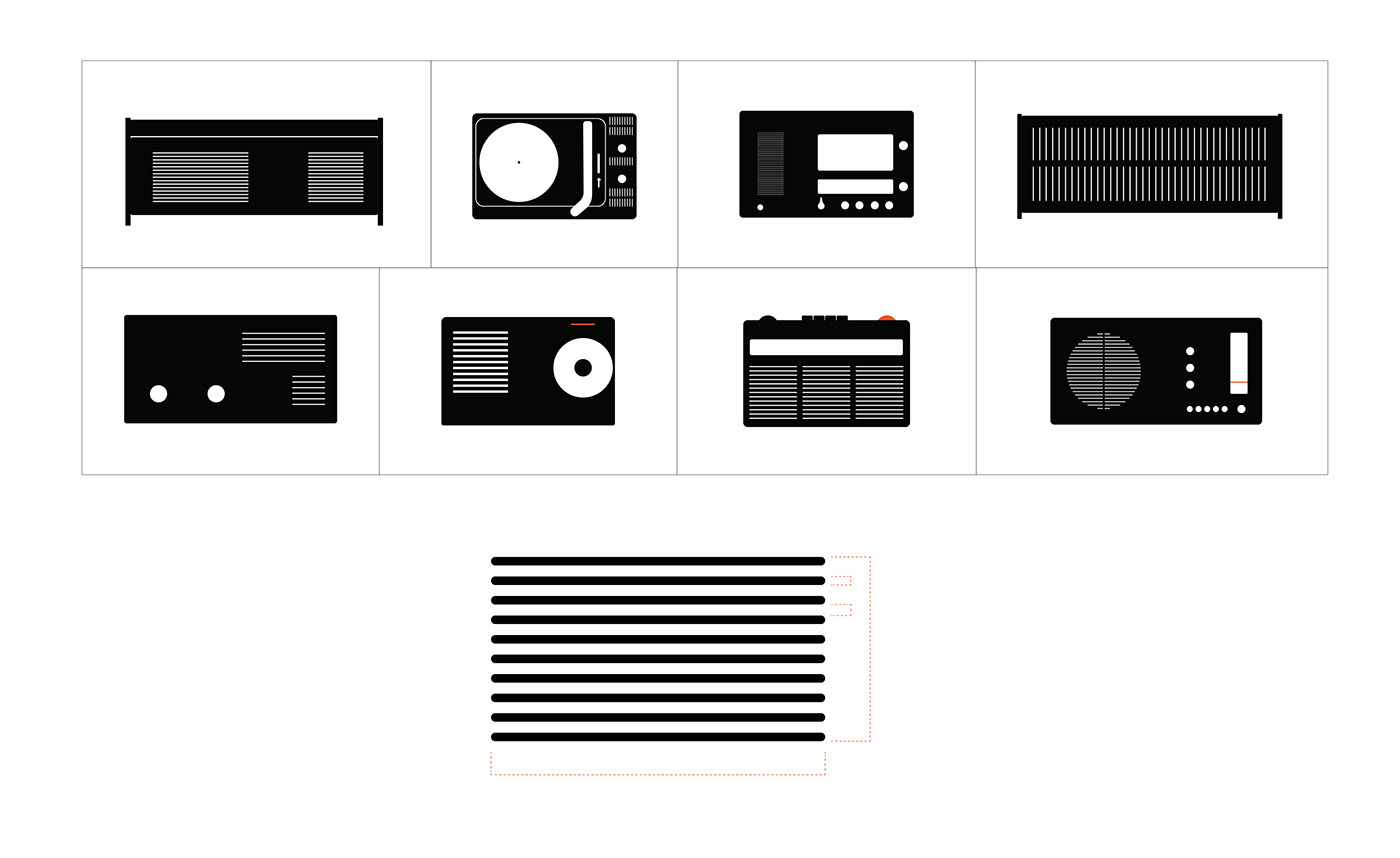
Controls
The beauty of former audio products is the fact that one could touch and interact with the components to tune the output to their desire. Braun used a set of controls in their audio products and they used the appropriate controls fulfilling the functionality of the respective product. Similar colours are easily distinguishable from the other non-interactive parts of the product to provide a visual cue that these parts are to be interacted with.
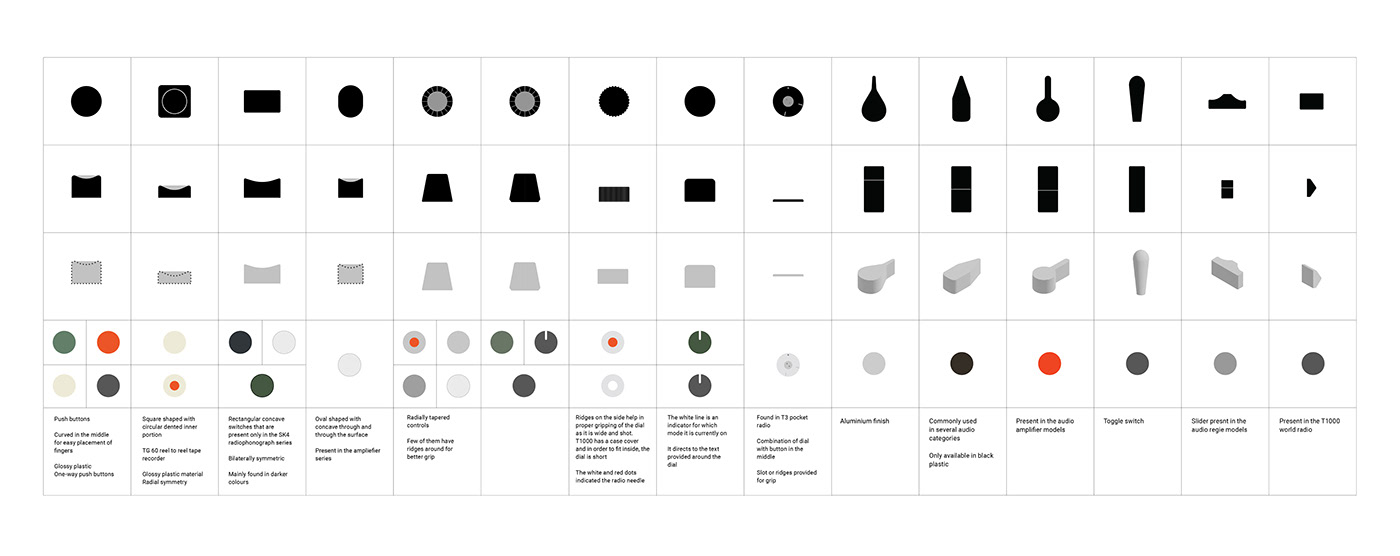
User needs & How Might We questions
From the heavy insights, important deliverables from the product were extracted. Converting an insight into a user’s need made things so much easier in understanding what the product should be. As the product shouldn’t be wearable, the needs showed indications of a smart system with good-quality speakers, microphones and smart assistants providing timely reminders.
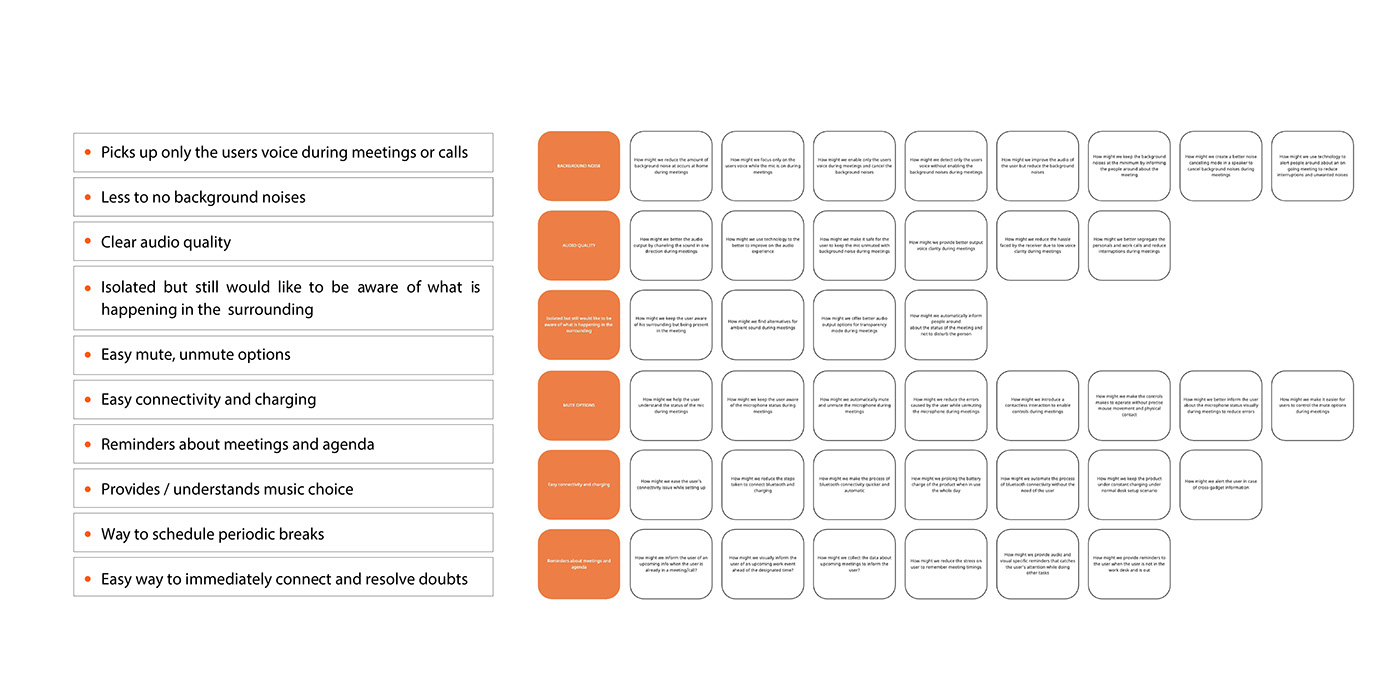
Fragment generation
Once HMW questions were done, each of those questions was taken forward to quickly iterate possible solutions. These ideas were just on first thought basis which was put down on paper since there were multiple solutions for each HMW question. The interesting factor about fragment generation was that these ideas on the post-its had the potential to be combined, which could lead to complex solutions, to begin with.
Braun’s design language has always been purely geometric & simple form. Even with its minimalistic form, it still stands out because of its simplicity. The aim was to remember the functional value prior to the minimal visceral look of the product. The approach is to combine the traditional design language of Braun with modern design interpretations.



The angled cross-sections were initially ideated to attain more visual of the screen with the eye angle while it's placed on the table.


The fillet radius on the corners of the product needed to be defined well and various models were made to visually understand which works best to the Braun language and current design trends.


However, considering how it might complicate the form, a simple form with an angling flap was decided as that would have different angling options wall-mountable version as well.







Speaker Grill ideation
Going ahead with the linear slots, 2D illustrations with varying slot thickness, spacing and numbers were ideated. Digitally viewing and seeing them in 3D & in context gave distinct differences.

Comparing 3 different speaker grills with varying thicknesses with respect to the audio output and visual language

Screen ideation
Deciding the bevel size, screen dimensions, space between the grills and screen, screen type and UI was essential to match the overall visual language of the product.
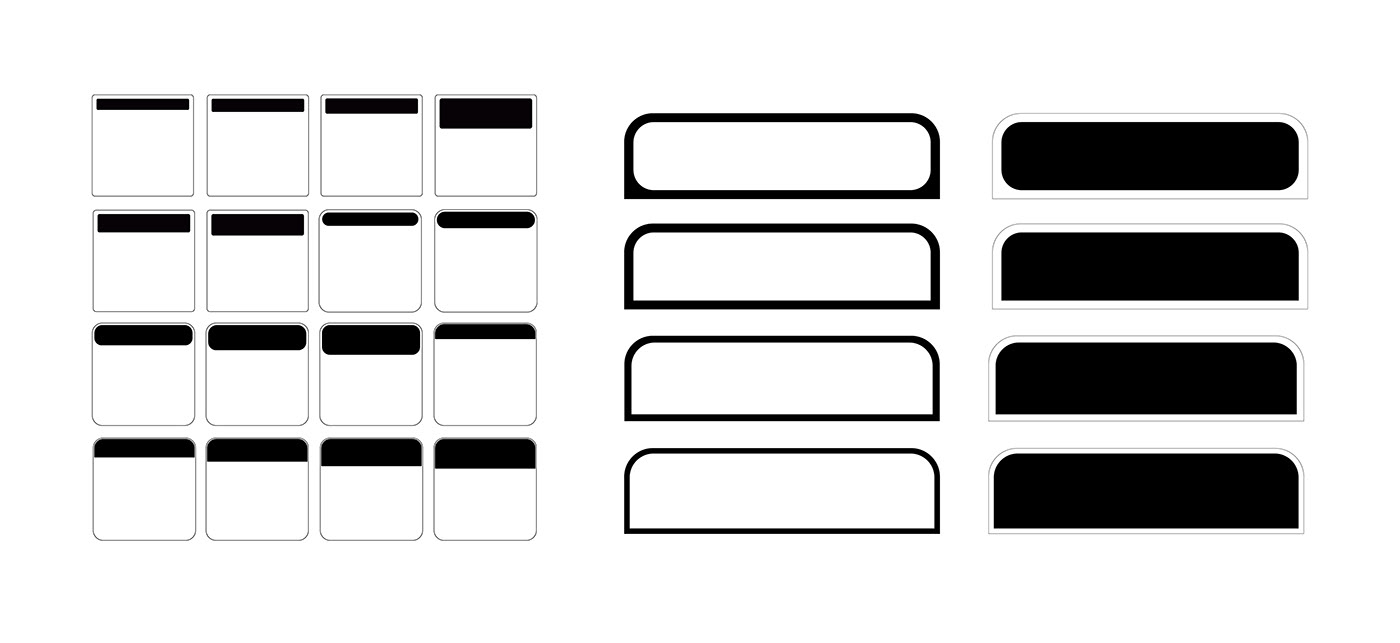
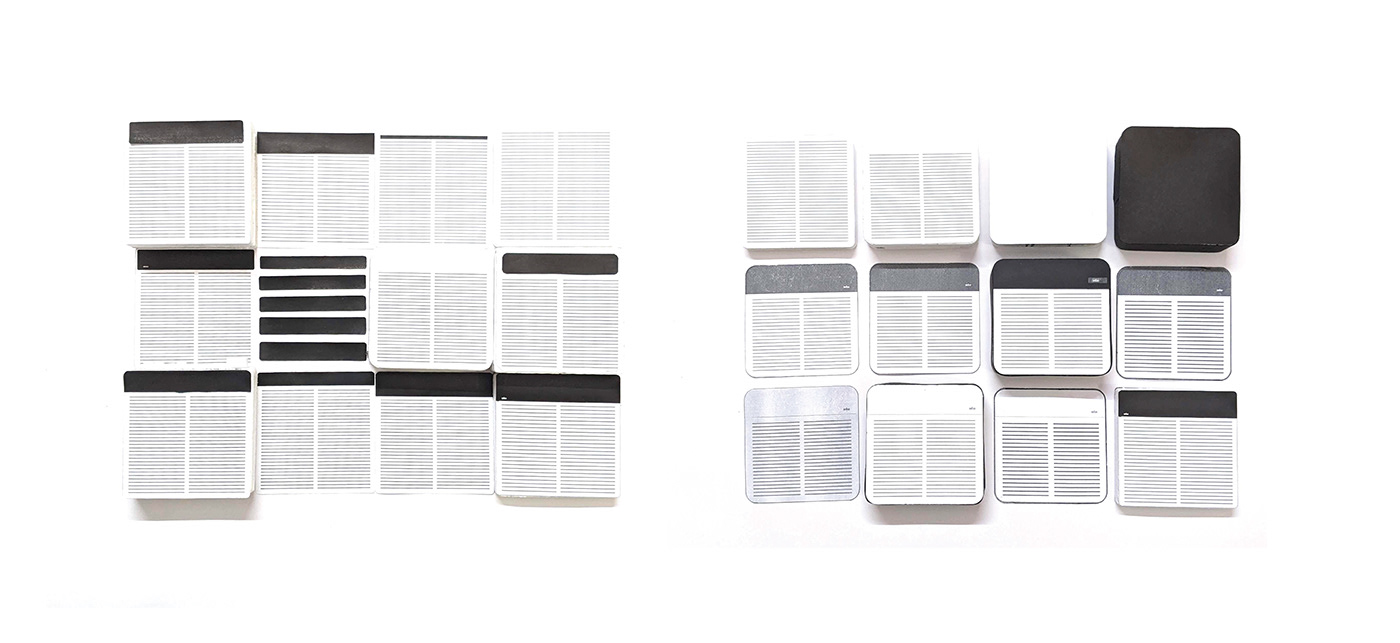
Gesture recognition control
Apart from the tactile controls, a contactless control interface is one of the solutions to quickly mute and unmute the microphone. Mainly designed for the muting options, it can be activated for other controls like pause play, and accept decline when the tactile controls are not at reach (wall-mounted).

Final concept
Inspired by the iconic control alignment of the SK series, the controls are arranged in the manner of priority and constant use. The dial + touch button combo gives the combined solution of the last two concepts. The dial can be operated with the finger.
1. Mute, unmute - tap
2. Volume - dial
3. Play pause - tap
4. Skip forward, backward - Swipe right and left
5. Google, Alexa - Long press and hold
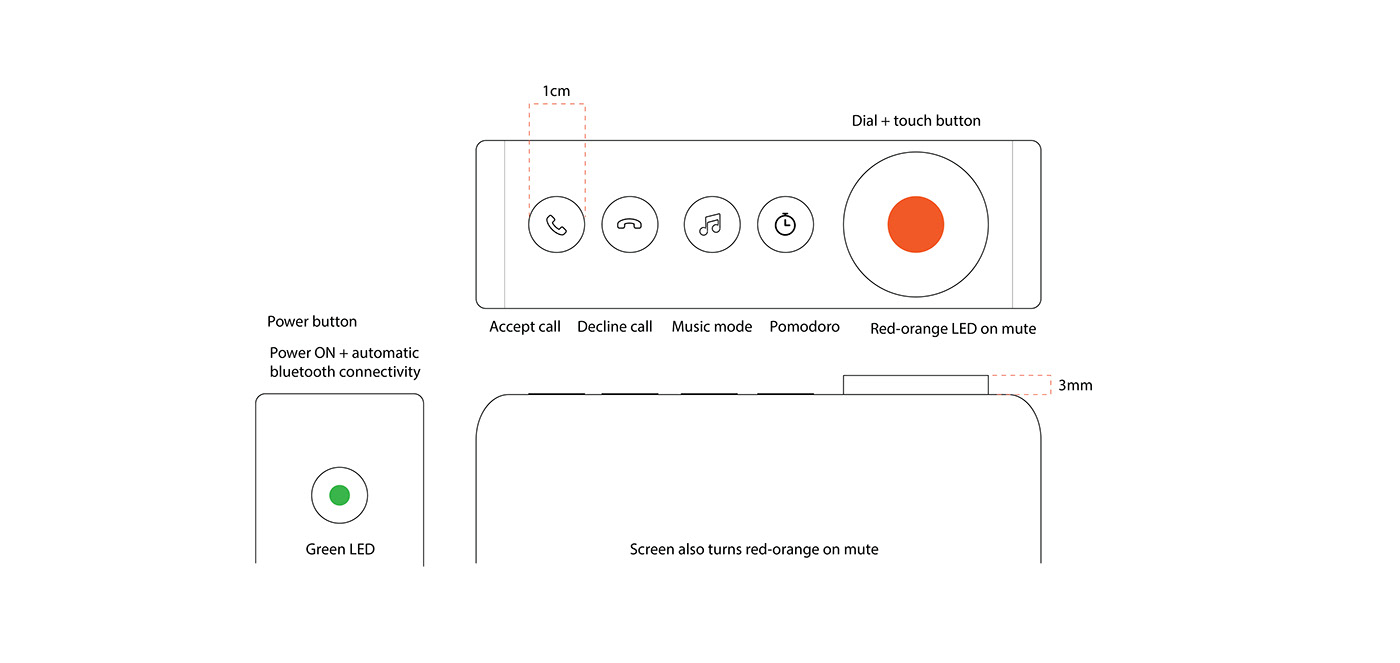
Control placement study based on user testing and CMF




Simple ideation on the placement of the internal components with their approximate dimensions.

[ SK01]
The SK01 is a smart speakerphone designed for ideal work-from-home situations. Designed for working professionals and students, the product provides features catering to the user’s needs. From the SK01 app, all the features are accessible through the phone and laptop, while the primary important features are a touch away from the product. SK01 acts as the perfect digital PA, keeping track of the agenda, and periodic reminders for meetings, calls, deadlines and tasks. While offline classes or meetings didn’t have any tech involved, it is essential to make maximum use of it when available. With the automatic note-taking feature, Pomodoro timer, live captioning and voice recognition tracking, meetings and classes are an easy breeze.
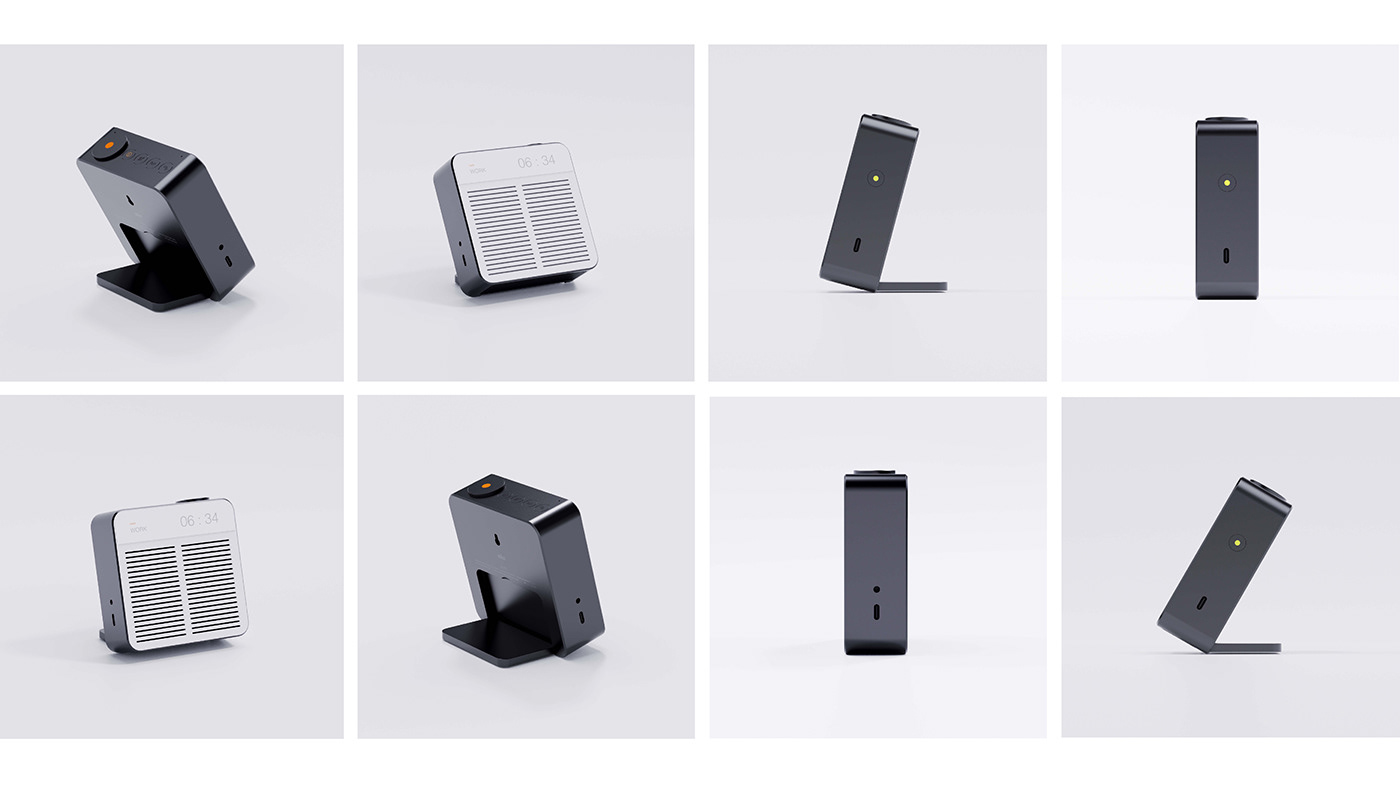
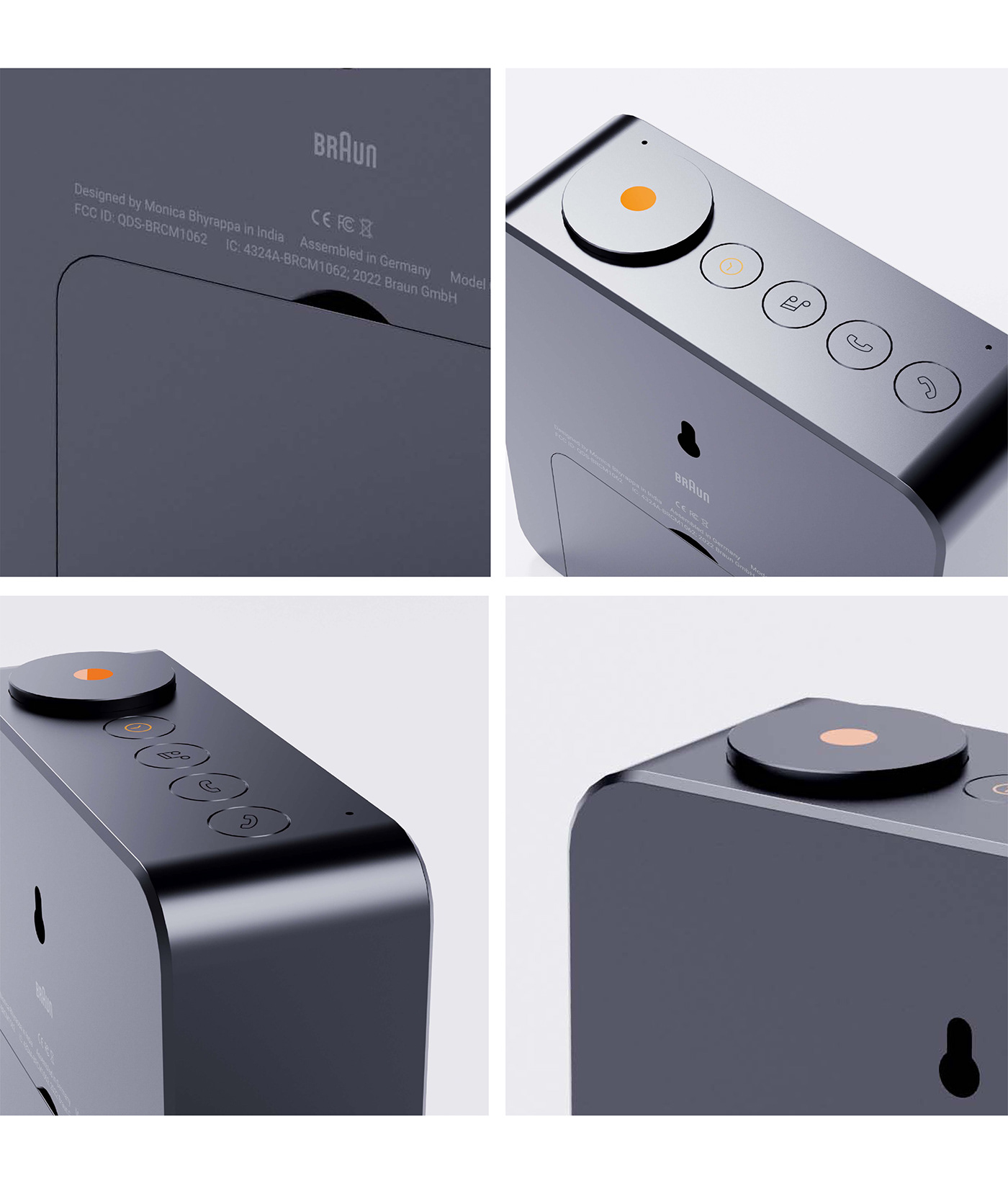











Thank you!



